Turkish tea, also known as çay, is a staple beverage in Turkey and is consumed throughout the day. But, what does Turkish tea taste like? The taste of Turkish tea can be described as strong, bold, and slightly bitter.
The tea is traditionally brewed in a double teapot, with the bottom pot holding boiling water and the top pot holding loose tea leaves. The tea is brewed for several minutes, resulting in a deep, reddish-brown color. When served, it is typically served in small, tulip-shaped glasses with a cube of sugar on the side. The sugar must be added to the tea to balance the bitterness.
Keep reading to learn more about this beloved beverage that is often served as a symbol of hospitality to guests.
Please note: This article contains affiliate links, meaning I may earn a commission if you make a purchase by clicking a link. Of course, this comes at no extra cost to you and helps me keep offering readers solid information.
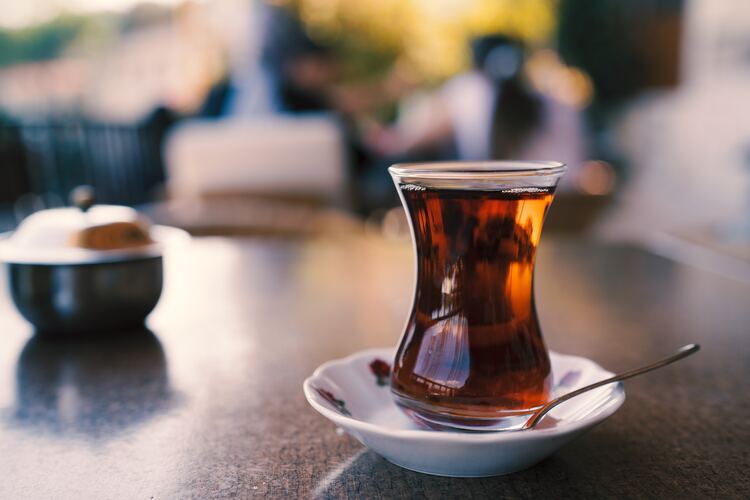
What is Turkish Tea?
If you’re visiting Turkey, you’ll quickly learn that Turkish tea, or çay, is a staple of Turkish culture. It’s a strong, black tea that’s typically served hot in small glasses, and it’s consumed throughout the day.
Turkish tea is grown primarily in the Rize region of Turkey, located on the eastern Black Sea coast. The climate and soil in this region are ideal for growing tea, and as a result, Rize is known as the tea capital of Turkey.
You’ll need a special teapot called a çaydanlık to prepare Turkish tea. This teapot consists of two stacked kettles, with the lower kettle used to boil water and the upper kettle used to brew the tea. Once the tea is brewed, it’s typically served in small, tulip-shaped glasses.
Turkish tea is a beloved part of Turkish culture and an essential part of any visit to Turkey. Whether you’re sipping tea in a bustling bazaar or relaxing in a quiet teahouse, you’re sure to enjoy this popular beverage’s rich, flavorful taste.
What Does Turkish Tea Taste Like?
Here’s a description of the flavor profile of Turkish tea:
- Robust and Bold: Turkish tea is known for its strong and bold flavor. It is typically made with black tea leaves, contributing to its robust character. The tea leaves are often a blend of different varieties, which can impart various nuances to the flavor.
- Earthy and Aromatic: Turkish tea has an earthy quality with a subtle hint of smokiness. The tea leaves are typically sun-dried, which can enhance the earthy and slightly smoky notes in the brew.
- Rich and Full-Bodied: When appropriately brewed, Turkish tea has a rich and full-bodied taste that coats the palate. It has a thickness that makes it satisfying and comforting to drink.
- Balanced Astringency: While Turkish tea is bold, it usually strikes a balance with a moderate level of astringency. This astringency adds a refreshing aspect to the tea, making it a great choice to enjoy with sweet treats or savory snacks.
- Slightly Bitter: Turkish tea can have slight bitterness, often mitigated by adding sugar. In Turkey, it is customary to serve tea with sugar cubes on the side, allowing each person to sweeten their tea to their preference.
- Versatile: Turkish tea can be enjoyed in various ways, and the flavor profile may vary depending on how it’s prepared. Some people prefer more potent tea, while others dilute it with hot water to make it milder.
- Goes Well with Turkish Delights: One of the classic pairings for Turkish tea is with “lokum” or Turkish delight. The sweet and aromatic nature of the delight complements the boldness of the tea.
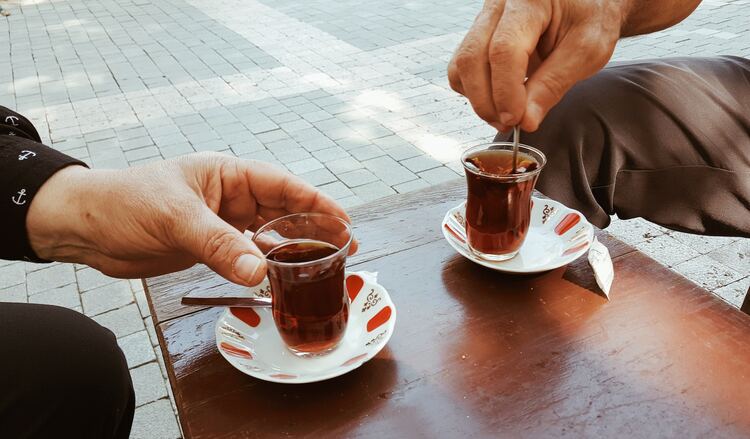
How is Turkish Tea Made?
If you’re curious about how Turkish tea is made, you’ve come to the right place. It’s typically prepared using a special double-stacked teapot called a “çaydanlık.” Here’s a breakdown of the brewing process.
Ingredients and Equipment
- Turkish Tea Leaves: Use high-quality Turkish tea leaves, preferably Rize tea, for the most authentic flavor.
- Water: Fresh, cold, and clean water.
- Teapot (Çaydanlık): This is a unique teapot designed for brewing Turkish tea, consisting of two stacked kettles. The bottom kettle is larger and holds boiling water, while the top kettle has a finer-meshed filter for steeping the tea leaves.
- Turkish Tea Glasses (Çay Bardağı): These are small tulip-shaped glasses traditionally used for serving Turkish tea.
- Sugar (optional): If you prefer sweet tea, have sugar cubes or granulated sugar on hand.
Instructions
- Measure the Tea: For a standard çaydanlık, about 200 ml capacity, use 2-3 teaspoons of loose Turkish tea leaves (adjust according to taste preferences). Place the tea leaves in the top kettle.
- Rinse the Tea Leaves: Pour some cold water over the tea leaves in the top kettle. Swirl the water gently and then pour it out. This step removes any dust or impurities from the tea leaves.
- Fill the Bottom Kettle: Pour cold water into the bottom kettle of the çaydanlık, filling it about two-thirds full. The amount of water depends on the strength of the tea you desire. For stronger tea, use less water.
- Assemble the Çaydanlık: Place the top kettle (with the rinsed tea leaves) onto the bottom kettle. Ensure that the two kettles are securely joined.
- Boil the Water: Place the çaydanlık on the stove and boil the water in the bottom kettle. Low heat to avoid rapid boiling is essential, which could over-brew the tea.
- Steam the Tea: Once the water in the bottom kettle starts boiling, the steam will rise and infuse the tea leaves in the top kettle. Let the tea steep in the steam for 15-20 minutes or until it reaches your desired strength. Keep an eye on the color to gauge the strength.
- Pour and Serve: Remove the çaydanlık from the heat when the tea is ready. Pour the brewed tea into Turkish tea glasses, filling them about one-third to one-half full.
- Dilute and Sweeten (Optional): To serve, dilute the tea with hot water from the bottom kettle to achieve the desired strength. Add sugar cubes or granulated sugar to the glass according to your preference. Some people like their tea very sweet, while others prefer it unsweetened.
Turkish tea is traditionally sipped slowly and savored. Small snacks often accompany it.
Health Benefits of Turkish Tea
If you are a tea lover, you will be glad to know that Turkish tea is delicious and has numerous health benefits. Here are some of the health benefits of Turkish tea that you should know:
Antioxidants and Flavonoids
Turkish tea is rich in antioxidants and flavonoids, which help to protect your body against damage caused by free radicals. Free radicals are unstable molecules that can cause cell damage and lead to chronic diseases such as cancer, heart disease, and Alzheimer’s disease.
Heart Health and Cholesterol
Drinking Turkish tea can help to improve your heart health by reducing your risk of heart disease. The flavonoids in Turkish tea help to lower your LDL (bad) cholesterol levels, which can clog your arteries and increase your risk of heart disease.
Stress and Tension
Turkish tea is also known for its calming properties, which can help to reduce stress and tension. The compounds in Turkish tea help lower your cortisol levels, the hormone responsible for stress. Drinking Turkish tea can also help improve your sleep, further reducing stress and tension.
So, the next time you enjoy a cup of Turkish tea, remember that you are indulging in a delicious beverage and doing your body a favor.
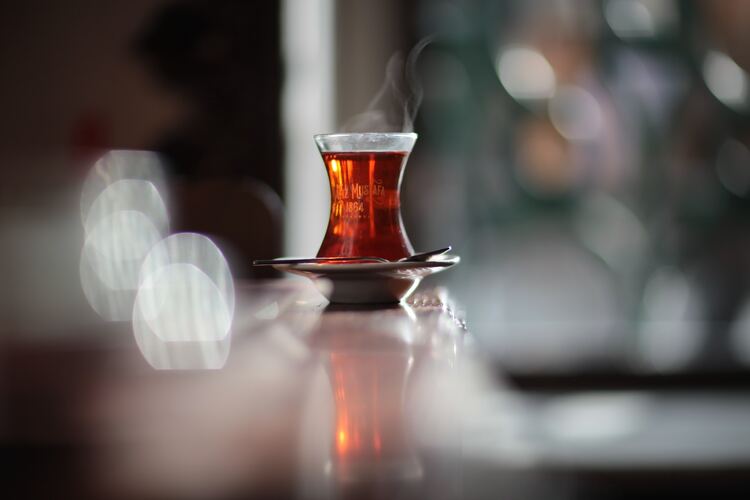
Variants of Turkish Tea
Turkish tea comes in various variants that cater to different tastes and preferences. Here are some of the most common types of Turkish tea:
Flavored Tea
You can try flavored tea if you want to add a little twist to your tea. Flavored tea is made by adding natural flavors to regular tea leaves. Some popular flavors include apple tea, oralet (a type of Turkish tea made with cinnamon and cloves), and bergamot tea. Flavored tea is perfect for those who want to enjoy the taste of tea with a hint of sweetness.
Tea Concentrate and Granules
Tea concentrate and granules are perfect for those who want to make tea quickly and easily. Tea concentrate is a liquid tea that you can mix with hot water to make a cup of tea.
Tea granules, on the other hand, are dried tea leaves that have been ground into a fine powder. You can mix tea granules with hot water to make a cup of tea. Some popular tea concentrates and granules include black, green, and Ceylon tea.
Other Types of Tea
Apart from the above-mentioned variants, other types of tea are popular in Turkey. One such type is Assam tea, a black tea grown in the Assam region of India. Assam tea is known for its strong flavor and is perfect for those who like their tea strong.
Food Pairings
Several food items pair well with Turkish tea, complementing its taste and providing a delightful culinary experience. Here are some traditional options:
- Simit: Simit is a circular sesame-covered bread commonly enjoyed with Turkish tea. Its slightly crunchy texture and nutty flavor make it a perfect accompaniment.
- Pastries: Various pastries, such as börek (stuffed pastry), su böreği (layered pastry with cheese), or poğaça (savory pastry), are commonly served alongside tea. They come in different fillings and shapes, and their flaky crusts pair well with the tea.
- Turkish Delight: Also known as lokum, Turkish Delight is a gelatine-based sweet treat flavored with rosewater, lemon, pistachio, or other ingredients. Its chewy texture and aromatic flavors make it an excellent choice to enjoy with tea.
- Baklava: Baklava is a rich and sweet pastry made of layers of filo dough filled with nuts and soaked in honey or syrup. Its buttery and crispy texture and sweetness contrast beautifully with the tea’s strong flavor.
- Cheese: Turkish tea is often enjoyed with a selection of cheese, including beyaz peynir (white cheese), kaşar cheese, or tulum cheese. The mild, creamy flavors of the cheese complement the tea well.
- Olives: Olives, particularly the green variety, are commonly served as a side dish with Turkish tea. Their briny taste and firm texture offer a savory balance to the tea’s bitterness.
- Nuts: A bowl of mixed nuts, such as almonds, pistachios, or hazelnuts, can be a delightful snack while sipping Turkish tea. Their crunchy texture and natural flavors complement the tea nicely.
These are just a few foods that pair well with Turkish tea. Ultimately, the choice of food depends on personal preferences and the occasion.
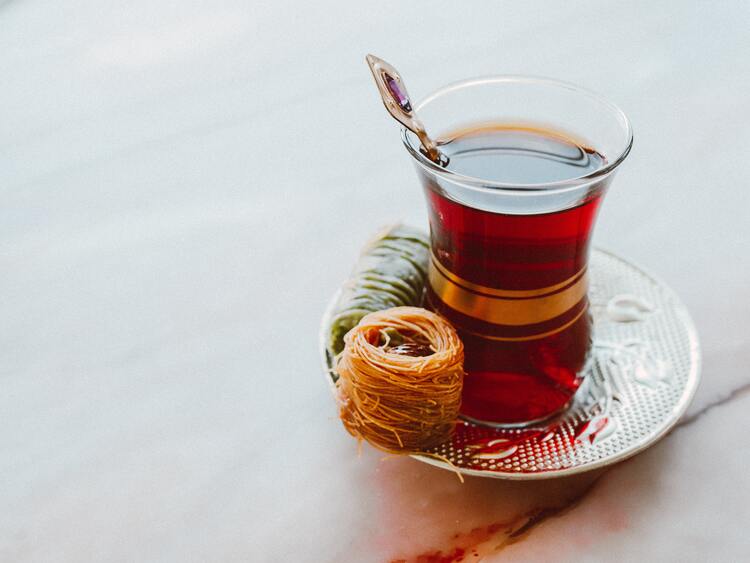
Turkish Tea Culture
History and Tradition
Turkish tea culture has a rich history and tradition that dates back to the Ottoman Empire. The first tea plantations were established in the Rize region of Turkey during the 1900s. The tea industry in Turkey was nationalized in 1924, and since then, Turkish tea has become a staple in Turkish culture.
Tea Consumption and Daily Rituals
Tea consumption is a daily ritual in Turkish culture. It is common to see people sipping tea in cafes while enjoying shortbread, baklava, or other pastries. Tea is also an essential part of Turkish hospitality, and it is customary to offer tea to guests as a sign of welcome.
Tea and Hospitality
Tea is an essential part of Turkish hospitality. You will likely be offered a cup of tea when you visit someone’s home. Turkish hosts take great pride in serving their guests’ tea, and it is customary to offer sugar cubes, Turkish delight, or other sweets to accompany the tea.
Tea and Art
Turkish tea culture is not just about drinking tea; it is also about the art of serving and enjoying tea. Turkish tea glasses are an important part of this culture. The glasses are small and curved and usually served on a saucer. It is customary to hold the glass by the rim or the base, but never by the middle.
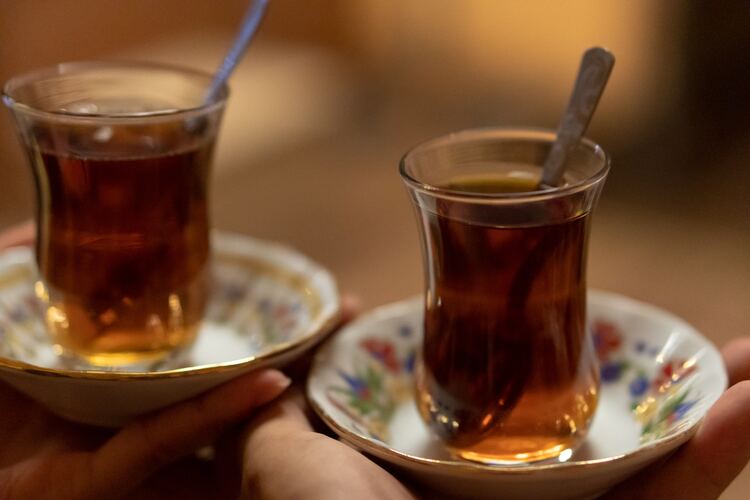
Buying Recommendations
At this point, you may want to get a taste of Turkish tea. Here are our top recommendations, if you want to prepare this at home.


Caykur Organic Hemsin Turkish Tea in Metal Can


LaModaHome Handmade Copper Turkish Traditional Tea Pot

Turkish Tea Glasses and Saucers Set

This is it for now. Let me know if you have tried Turkish tea. Until next time!
To you, what does Turkish tea taste like?
More About Black Tea
The Process of Making Black Tea
What Does Black Tea Taste Like?
What Does Assam Tea Taste Like?
What Does Chai Tea Taste Like?